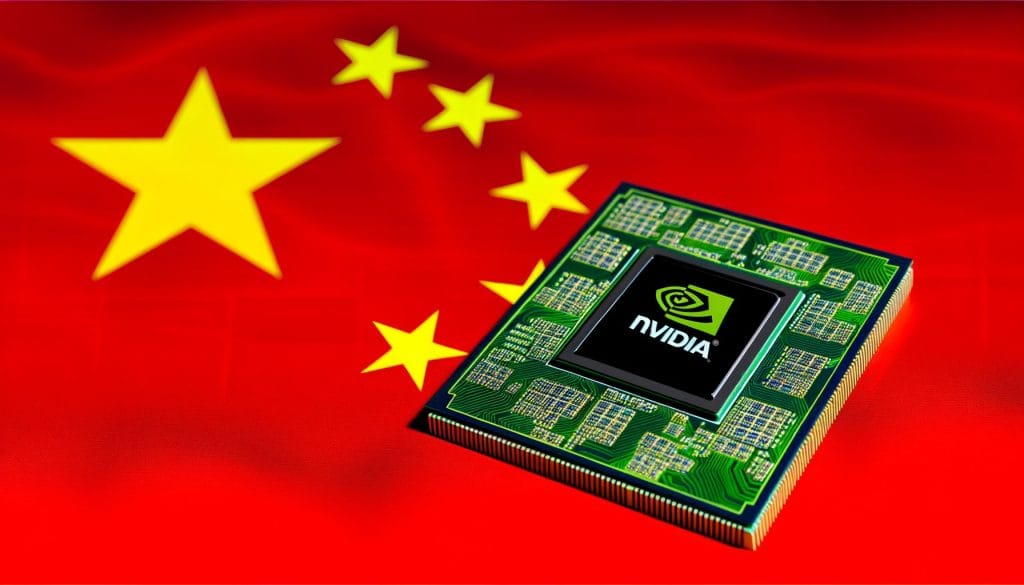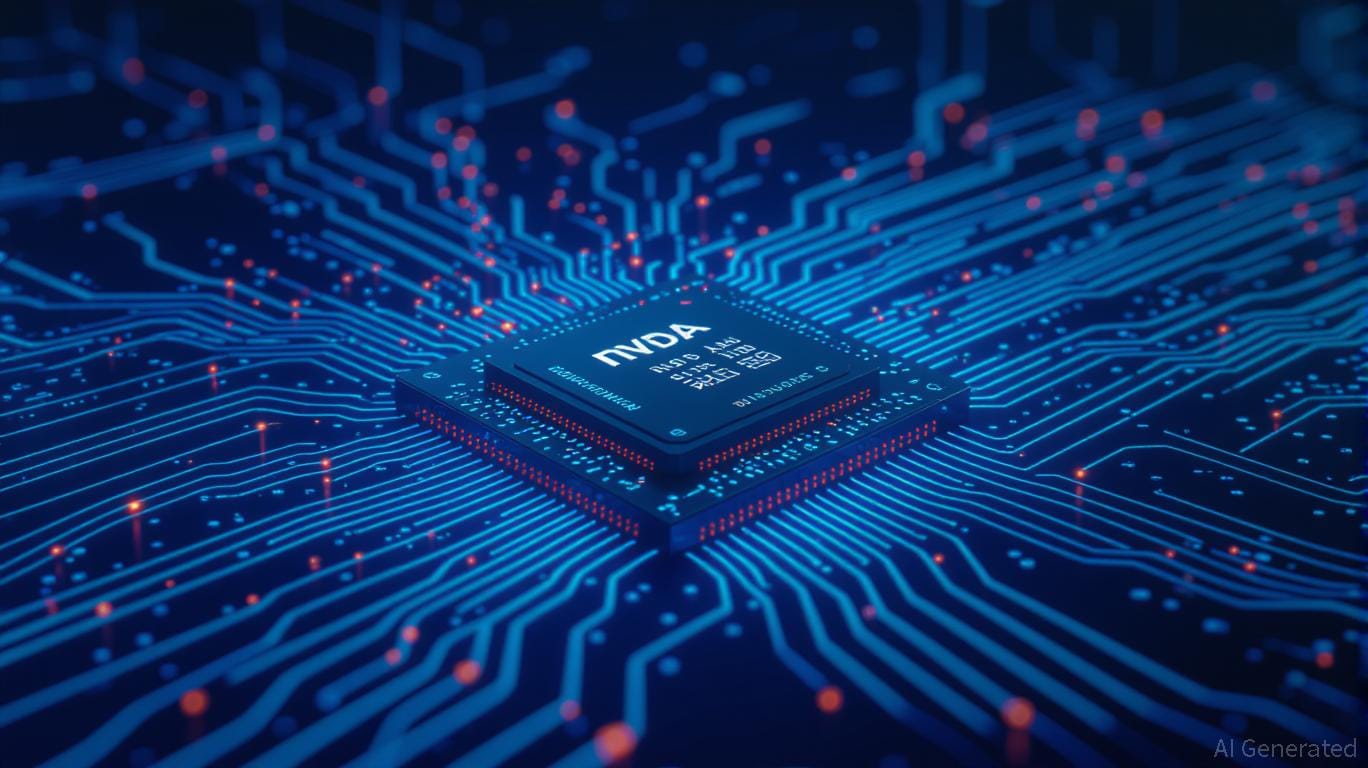Nvidia H20 AI Chips Face Scrutiny in China Amid Security Concerns
China's scrutiny of Nvidia's H20 AI chip is a high-stakes geopolitical drama where technology and national security collide.

Written by Lavanya, Intern, Allegedly The News
BEIJING, August 11, 2025
The summons of Nvidia representatives by China's Cyberspace Administration (CAC) on July 31, 2025, over alleged security risks in its H20 AI chips was not a routine regulatory inquiry; it was a calculated geopolitical maneuver. This incident, while ostensibly about cybersecurity, has become a pivotal case study in the escalating U.S.-China tech rivalry, where a commercially compliant product, "the H20", is a pawn in a high-stakes battle for national security and technological dominance.
The Case History: A Timeline of Compliance, Reversal, and Scrutiny
The story of the H20 chip is a chronology of U.S. policy decisions and Chinese reactions. In late 2023, the U.S. government, under the Biden administration, imposed new export controls on advanced AI chips, including Nvidia’s flagship H100, to limit China’s military-civil fusion capabilities and maintain a global lead in AI. These regulations were part of a "small yard, high fence" strategy aimed at restricting a narrow set of critical technologies with military potential while allowing other trade to continue. In response, Nvidia engineered a series of "de-featured" chips for the Chinese market, with the H20 being the most powerful, designed specifically to fall below the new performance thresholds.
The chip’s journey was complicated by a sudden policy reversal under the Trump administration. Initially banned in April 2025 amidst escalating trade tensions, the ban was reversed in July after high-level lobbying by Nvidia CEO Jensen Huang. This policy whiplash drew sharp criticism from U.S. lawmakers and "China hawks" who viewed it as a "dangerously inconsistent" pivot that undermined the goal of curbing Chinese AI capabilities. Security specialists, including former Trump administration officials, sent a letter to the Commerce Secretary, calling the reversal a “strategic mistake” that could strengthen China’s military and economic position.
China’s pushback was swift and coordinated. On July 31, the CAC summoned Nvidia to address alleged "backdoor security risks".This official action was followed by a synchronized state media campaign from outlets like CCTV-affiliated Yuyuan Tantian, which criticized the H20 as "neither environmentally friendly, nor advanced, nor safe".This comprehensive critique, blending legitimate security concerns with economic and environmental attacks, was a tactical response to a product that was itself a direct result of U.S. national security policy. The synchronized nature of this criticism suggests a strategic and centralized decision, not a spontaneous reaction. This maneuver aims to capitalize on a moment of U.S. policy vulnerability, framing American technology as inherently untrustworthy.
The Evidence Room: Allegations, Denials, and the Technical Reality
The core allegations from Chinese state media focus on a "hardware backdoor" and the potential for "remote shutdown" or "remote control" of the chip. These claims were explicitly linked to proposed U.S. legislation, such as the U.S. Chip Security Act, which seeks to mandate location verification and other security mechanisms in exported chips. This public statement by China is not an abstract fear but a direct response to documented U.S. policy discussions. Chinese telecom expert Xiang Ligang told the Global Times that a remotely controlled chip could be shut down or have its performance reduced at critical moments, disrupting normal operations.
Nvidia has vehemently denied these accusations. The company’s Chief Security Officer, David Reber, publicly stated that its chips contain "no backdoors, no kill switches, and no spyware," arguing that such features would create single points of failure and irreparably harm trust in American technology. Reber likened a mandated kill switch to "buying a car where the dealership keeps a remote control for the parking brake," an overreaction that would threaten America's economic and national security interests. This position aligns with fundamental cybersecurity principles and historical lessons, such as the failed Clipper Chip initiative of the 1990s, which was abandoned due to the security risks of government-mandated backdoors.
A technical deep dive into the H20 reveals the complexity behind these claims. The H20 is based on the Hopper microarchitecture, featuring 14,592 CUDA cores, a reduction from the H100’s 16,896 cores to meet U.S. performance restrictions. Its single-chip performance is only about 15% of the H100's. However, the H20 retains key strengths that U.S. export controls failed to address. It boasts a high-speed NVLink interconnect and 96GB of HBM3 memory with a bandwidth of 4.0 TB/s, a significant increase over the H100's standard 80GB memory. This design allows Chinese companies to link multiple H20 chips together to create a powerful AI training cluster that can collectively achieve up to 50% of the H100’s performance. The discrepancy between the chip's low single-chip performance and its preserved interconnect capabilities reveals a critical loophole in the export controls that Chinese companies have been quick to exploit. The H20 is also more power-efficient than its counterparts, with a lower power consumption of 400W compared to the H100’s 700W, which reduces operational costs for large-scale deployments.

Trusted Computing and Confidentiality in AI Hardware
The debate over backdoors is taking place against a backdrop of a rising field of technology called "Confidential Computing." This technology is designed to protect data while it is in use by performing computations within a hardware-based "Trusted Execution Environment" (TEE). Nvidia has already implemented this in its Hopper architecture, a feature it calls GPU Confidential Computing (GPU-CC). This technology extends hardware-based data protection from the CPU to the GPU, ensuring the confidentiality and integrity of AI workloads.GPU-CC includes secure boot and device attestation mechanisms to verify that a GPU's firmware is authentic and that the system is operating in a secure state. This secure design, ironically, is what both sides are fighting over. While China fears remote control from the U.S. government, U.S. officials are concerned about illicit diversions and the need for new tracking measures, suggesting that the integrity of the chips themselves is a core part of the national security conversation.
The Motive: Genuine Security Concerns or Geopolitical Rivalry?
The motivation behind China's scrutiny of the H20 is a complex blend of both legitimate cybersecurity fears and strategic geopolitical maneuvering. Both the U.S. and China have valid concerns about the security of AI hardware, as evidenced by the NSA's AI Security Center (AISC) and China's data security laws. The existence of a black market for banned H100 chips, smuggled into China through transshipment hubs like Singapore and Malaysia, underscores a real threat vector that both nations would want to close. The U.S. Department of Justice has arrested two Chinese nationals for illegally exporting millions of dollars' worth of chips using a front company and falsified end-user information, proving that these security risks are not abstract but concrete.
However, the specific timing and coordinated nature of the Chinese pushback point to a broader geopolitical agenda. The campaign is not merely about product security; it is a tactical effort to devalue American technology, bolster domestic alternatives like Huawei’s Ascend series, and frame U.S. export controls as an act of economic coercion. By connecting the H20 to documented U.S. legislative proposals for tracking chips, China is turning the tables, using the same national security narrative against U.S. technology that the U.S. has used against Chinese tech companies. This struggle is a battle for "trusted" technological platforms, where each side aims to position its own tech stack as the secure and reliable choice.
The U.S. export controls have inadvertently achieved what years of Chinese government initiatives could not: compelling Chinese companies to develop domestic alternatives. Huawei's Ascend series, now seen as a competitive alternative, is aggressively developing its open-source software ecosystem, CANN, to challenge Nvidia’s dominant CUDA platform. While Huawei's chips have a less mature software ecosystem and have faced production capacity issues, they are making significant progress and offer greater computational performance and better energy efficiency than the H20 on a per-chip basis. China's actions are effectively compelling domestic companies to accelerate their path toward technological self-sufficiency, with Huawei's new systems even outperforming Nvidia's state-of-the-art systems on key dimensions. Nvidia's market share in China has already declined from over 90% to approximately 50-66% as domestic players have gained ground, a trend that is likely to continue.
Impact Analysis: Business, Financial, and Market Dynamics
The H20 incident has been a source of both immense revenue and significant risk for Nvidia. The resumption of sales unlocked a $4.6 billion revenue stream in Q1 2025, accounting for 12.5% of the company’s total revenue. Analysts project that this could scale to $10 billion annually if this revenue share is sustained. Chinese tech giants, including Alibaba and Tencent, have placed massive orders totaling $16 billion for approximately 1.3 million H20 units. This demonstrates the high demand for Nvidia's hardware and its mature CUDA software ecosystem.
The temporary ban, however, had led to a projected $8 billion quarterly revenue hit and a $5.5 billion inventory write-off, showcasing the financial volatility tied to U.S. policy decisions. The market reacted accordingly, with Nvidia’s stock surging 4.47% pre-market upon news of the export greenlight, and its competitor, AMD, also seeing a rise. This incident highlights the profound risks of relying on politically sensitive markets.
This incident is also accelerating the global AI chip race. The U.S. government's controls have created a unique opportunity for domestic vendors like Huawei, Cambricon, and Hygon to gain market share. While Nvidia's H20 holds an advantage in its interconnect speed, which is crucial for linking multiple chips in a cluster, Huawei's chips offer greater total processing performance and better energy efficiency. Ultimately, China's actions are compelling domestic companies to accelerate their path toward technological self-sufficiency.

What Happens Next?
The geopolitical standoff over Nvidia's H20 chip is far from over. It is a critical moment in the U.S.-China tech race, with several potential outcomes that will reshape the semiconductor industry for years to come.
First, Nvidia will face immense pressure to re-engineer its chips for future compliance. The company must navigate the competing demands of U.S. policymakers, who may seek to embed security features, and Chinese regulators, who will be increasingly hostile to such features. This could lead to a permanent fracturing of the tech stack, where two distinct versions of American chips exist: one for the U.S. and its allies, and a heavily-modified, compliance-focused version for China. This could also drive Nvidia to further develop its own internal compliance frameworks, emphasizing supply chain security and partner vetting to avoid black market diversions and illicit exports.
Second, China’s state media campaign could have a lasting impact on buyer behavior. By persistently raising security concerns, Beijing may successfully push a sufficient number of buyers toward domestic alternatives, permanently shrinking Nvidia’s market share. While Huawei's software ecosystem is less mature than Nvidia's CUDA, China’s push for technological sovereignty and its open-source initiatives could accelerate its development and eventually create a viable, trusted alternative. This would mark a strategic win for China, as it would reduce its dependency on U.S. technology and create a self-sufficient ecosystem.
Finally, the incident will likely lead to the creation of new international compliance standards for cross-border tech deals. As AI hardware becomes a national security issue, governments will need to develop new frameworks for evaluating the security of foreign-made components, including the threat of collusion among adversaries in the supply chain. This could take the form of shared international standards or a more nationalistic, protectionist approach, where each country sets its own stringent rules. The outcome of this struggle will not only affect Nvidia’s market but will also define the rules of engagement for a new era of global technological competition.
The Unavoidable Paradox: A Theoretical Takeaway
The H20 saga reveals a profound and unavoidable paradox at the heart of the U.S.-China tech rivalry. By deliberately kneecapping its own technology and restricting access to its most advanced chips, the U.S. government has created a unique incentive for China to accelerate its pursuit of technological self-sufficiency. The H20, a product of compliance, is ironically serving as a bridge for Chinese companies to gain experience with advanced architectures while domestic alternatives, like Huawei’s Ascend series, mature. The final theory is that a strategy of "full decoupling" is not just economically costly for U.S. companies like Nvidia, which relies on a massive Chinese market for revenue and innovation, but is strategically self-defeating. The future isn't about one dominant tech stack but a fragmented, bipolar ecosystem where trust is the most contested and valuable currency.
Defining 'Trusted' Hardware
As AI hardware becomes a battleground for national security, what role should multinational tech companies play in defining the global standards for a 'trusted' chip, and can they do so without alienating either the U.S. or Chinese markets?
Sources
- Reuters and Financial Times provided critical reporting on the U.S. government's policy reversals and Nvidia's lobbying efforts.
- Chinese state media, including Global Times and CCTV-affiliated Yuyuan Tantian, offered direct insights into Beijing's public statements and security concerns regarding the H20 chip.
- Analysis from sources like the RAND Corporation, The Motley Fool, and the Economic Times detailed the technical, financial, and geopolitical implications of the H20 incident, including market share data, revenue projections, and expert commentary on the effectiveness of U.S. export controls.




